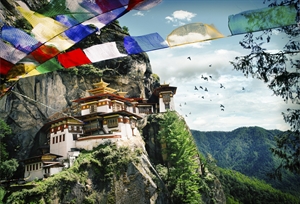An extended walk can give a unique intimate view of a region too rugged for motor vehicles, or give you access to almost pristine wilderness. The slower pace allows you to absorb the atmosphere and experience the landscape, and the act of putting one foot in front of the other is a very special form of relaxation and meditation.
Look after your feet and joints
We’ll start at the bottom, with your boots. Buy the best boots you can afford, and break them in before you go. Good socks are a must, too – a thin pair next to your feet and thicker pair on top is recommended to prevent blisters. Air your feet each day and treat any blisters – follow the British Mountaineering Club’s blister advice.
Some people, particularly those with weak knees, find hiking poles help them – again, try them out before you go to see if they are for you. Another big favour you can do yourself is to avoid overpacking. Ensure your pack fits well, too.
Altitude sickness
Moving on up: if you are in a mountainous area (above 2,400m), learn the signs of altitude sickness. NHS Choices has some information about altitude sickness. Mild altitude sickness will pass if you descend or acclimatise at the same altitude. However, people who suffer from mild altitude sickness may be vulnerable to the life-threatening high altitude cerebral oedema (HACE), a swelling of the brain caused by lack of oxygen.
There is medication available to treat altitude sickness, but it is not a substitute for acclimatisation or descent. Ask your travel health adviser for details and for more information about altitude sickness.
Set your own pace
Every trekker goes at their own pace and if you try to go too fast you risk wearing yourself out and you will miss the incredible sights you have travelled to enjoy. Let the faster walkers go ahead: you can catch up with them at the next rest stop. And faster walkers should be patient with those who prefer a slower pace.
Travel insurance
If you have an accident while trekking, how will you get help? In most parts of the world you have to pay for non-emergency care, and if you add a helicopter ride on top of that, your costs can run into tens of thousands of pounds. Ensure that your travel health insurance covers medical evacuation, and also that you are covered for trekking, too.
What vaccines do I need for a trekking holiday?
Your travel health adviser will take a look at your destination and make some recommendations. You may also want to get boosters for tetanus, diphtheria and polio. Tick-borne encephalitis is a particular risk in parts of Europe and Asia if you are walking in woodland or grassland. You may also need to take some tablets to prevent malaria if that is a problem in the area you are visiting.
For a full assessment, make an appointment with Global Travel Clinics. We prefer to see you six to eight weeks before you depart, but we can help out with last minute vaccinations too.


Book Online